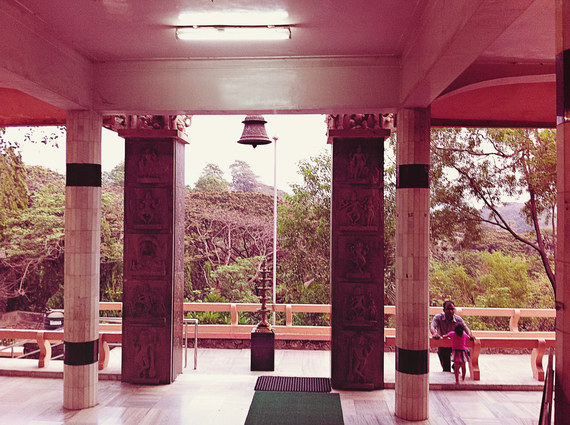As Indian Americans, we have grown up hearing stories from our parents about how they left India in search of a better life. They came to the West to create new opportunities for themselves and generations to come. In many ways, they have achieved what they set out to do.
The younger generations have found more opportunities, more amenities and more comfort. But somewhere in the quest for always striving for more, we have also become more discontent.
We have started asking the questions, "what brings real happiness?" and "what is the definition of a good life?"
Living in Dallas with corporate jobs and making ample money to buy anything they wanted, Priya Kumar and her husband Rahul Maini had what many would consider to be an ideal life. But something was missing.
"We knew that this would not lead to permanent happiness," said Kumar. "The definition of what a good life is has changed. People mostly want to eat, drink and be merry. But this left me with an empty feeling inside that was unbearable for me."
The couple, both in their late twenties, wanted to be able to find simplicity in everyday living. They wanted to define what happiness really was. "I wanted to be happy all the time regardless of my circumstances or material things," said Kumar.
While many Indians were coming to America, Priya and Rahul made a move back to India to find what had been missing for them.
They signed up for a two year course in Vedanta through an organization called Chinmaya Mission. Based on the ancient texts of Hinduism, Vedanta is a philosophy and art on living life with simplicity. "It teaches you how to think through your problems instead of what to think," said Kumar.
The couple lived in the heart of Mumbai at the Chinmaya Mission ashram. Like the eye at the center of a tornado, the peaceful ashram sits in the middle of a busy, bustling city. "There's a beautiful vibration here. You get a sense of peace," said Kumar. She told the story of how a rickshaw driver had brought them back to their Mumbai home after they had gone out to pick up some items. When the driver stepped into the ashram, he was in awe of the surroundings and of the serenity that he felt. "He did not even want to be paid," she said.
Here, they spent their days learning Sanskrit and attending Vedanta classes from 5am to 8pm everyday. "There were no holidays in the program," said Kumar. "We had to study and had exams."
Though the program was intensive, it was necessary to learn the foundation of this art of living. "It has to become so embedded into you, that it becomes your thinking," said Kumar.
With minimal access to the Internet and phones and few of the amenities they were accustomed to in the United States, they learned to adapt. "Humans are adaptive creatures," she explained.
What they found was that the comforts they once thought they could not live without, had no power over their joy.
In the United States, we become used to the amenities of daily living. "We start to mistake comfort for happiness," says Kumar. "In many parts of India, people live with a lot less and have learned to be fulfilled."
Priya and Rahul completed the course in two years and stayed an extra year to teach classes. Now three years and three months later, they are back in the United States and heading back to their corporate jobs.
This time, there is one difference. They have been transformed.
They found that happiness is:
- Being simple in our transactions and living a minimalistic life.
- Moving away from always thinking of ourselves and finding joy in service.
- Looking within for problem solving instead of finding short term joy in outside things.
- Sharing our joy by sharing with others.
- Understanding the deep interconnectedness of all life.
How is it that parts of the world that are so materially poor can be so spiritually rich? In the movie, Happy, Academy Award nominated director Roko Belic showed that a rickshaw driver in India had as much happiness as a middle class U.S. citizen. The rickshaw driver, even though he lived with a lot less, felt a deep sense of interconnectedness to his community and gratefulness for the joy in his life.
So how can we learn to live with less? And maybe we should all be asking ourselves the question, "what is the definition of a good life?"
For Priya and Rahul, it took a journey back to the place that older generations left behind and an extensive study into the heart of the soul, to find that the answer that they were missing...lay within them all along.

